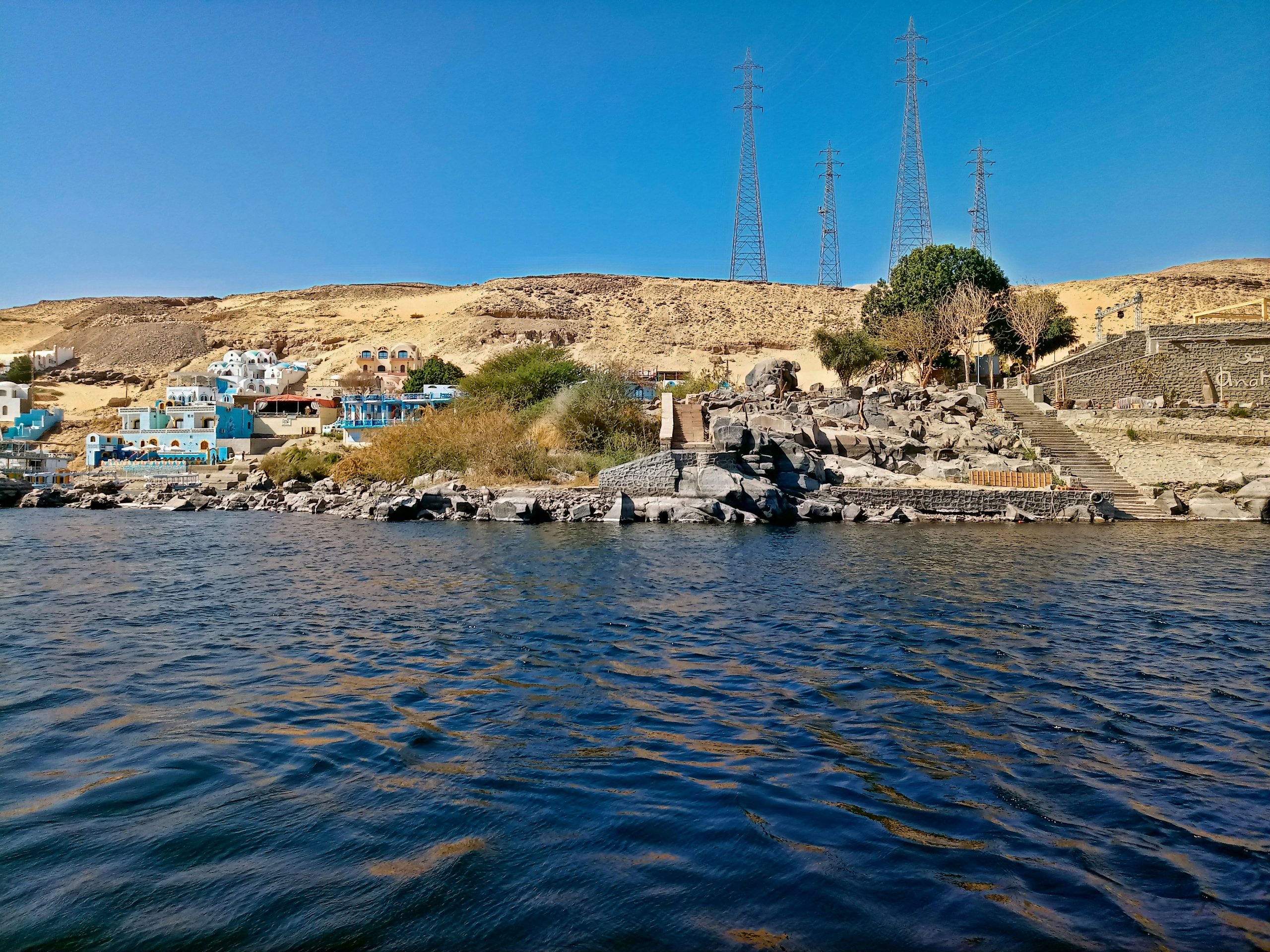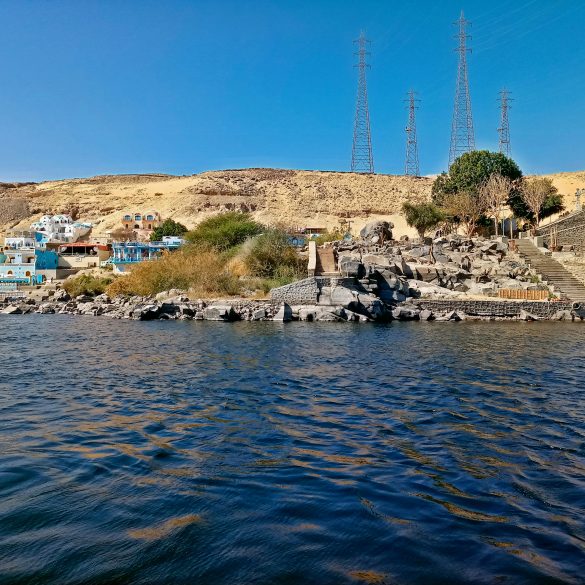Nubian Culture: Music, Dance & Language – A Living Heritage
The rhythmic pulse of a Nubian drum carries more than melody—it carries memory. Having spent considerable time researching African cultural traditions, I’ve come to understand that Nubian culture represents one of humanity’s most enduring legacies, stretching back over 4,000 years. What fascinates me most is how this ancient civilization continues to thrive through its expressive arts, maintaining identity despite centuries of displacement and change. When people think of ancient Africa, Egypt often dominates the conversation. But honestly? The Kingdom of Kush, centered in Nubia, ruled Egypt for nearly a century1. This historical reality reshapes our understanding of African civilization and highlights why Nubian cultural preservation matters so deeply today. Ancient Foundations: More Than Monuments The term “Nubia” derives from the ancient Egyptian word “nub,” meaning gold—a fitting name for a region that literally glittered with precious metals2. But here’s what gets me excited about Nubian heritage: while gold brought wealth, it was cultural innovation that brought lasting influence. Between 2000 BCE and 1500 CE, Nubian kingdoms controlled trade routes connecting sub-Saharan Africa with the Mediterranean world. I’ve always found it remarkable how this positioning shaped Nubian culture into something uniquely cosmopolitan. They weren’t just passive intermediaries—they actively synthesized influences from various civilizations while maintaining distinct cultural identity.
Sudan Cultural Insight: Modern Sudan hosts the majority of ancient Nubian archaeological sites, including over 200 pyramids—more than Egypt! The Meroitic period (300 BCE – 300 CE) represents the height of Nubian architectural and cultural achievement, with Meroe serving as the capital of this sophisticated African kingdom.
What strikes me most about ancient Nubian society is how music and dance weren’t merely entertainment—they were integral to governance, religion, and social cohesion. Archaeological evidence from Kerma and Meroe reveals musical instruments dating back millennia, suggesting that artistic expression was central to Nubian identity from the civilization’s earliest periods3.
The displacement began in the 1960s with the construction of the Aswan High Dam. Suddenly, thousands of Nubians faced forced relocation as Lake Nasser flooded their ancestral homelands. I remember reading firsthand accounts from elders who described watching their villages disappear beneath rising waters—taking with them not just buildings, but sacred sites, family graveyards, and places where their ancestors had sung the same songs for generations.
This displacement created what I call the “cultural urgency” that drives modern Nubian preservation efforts. When you can’t return to ancestral lands, culture becomes your homeland. Music, dance, and language transform from casual traditions into lifelines connecting people to their roots.
The Cultural Resilience Response
Rather than allowing displacement to fragment their identity, Nubian communities responded with remarkable cultural activism. They began systematically documenting traditions, teaching children heritage languages, and adapting ancient practices for modern contexts. It’s inspiring, really—how crisis can catalyze preservation rather than destruction.
Today’s Nubian cultural expression carries this tension between loss and determination. Every song performed, every dance taught, every word spoken in Nobiin or Kenzi represents an act of cultural resistance. The arts haven’t just survived—they’ve evolved, incorporating contemporary influences while maintaining essential traditional elements.
Musical Traditions: Rhythms of Resistance and Joy
Nubian music possesses a complexity that initially surprised me during my research. I’d expected something more… well, simple isn’t the right word, but perhaps more straightforward? Instead, I discovered intricate polyrhythmic structures that rival any musical tradition globally. The sophistication reflects millennia of cultural development and cross-cultural exchange. The foundational rhythm of Nubian music is the “Arageed”—a 6/8 time signature that creates this incredibly infectious groove4. But here’s what fascinates me: within this framework, musicians layer multiple rhythmic patterns that create both unity and complexity. It’s like watching a master weaver work—each thread serves the overall pattern while maintaining its own distinct character.Essential Nubian Instruments
The traditional Nubian ensemble centers around specific instruments, each carrying cultural significance beyond mere sound production. The tabla (frame drum) provides rhythmic foundation, while the oud (lute) offers melodic sophistication. What really gets me excited, though, is the dalluka—a goblet-shaped drum whose techniques require years to master properly.| Instrument | Material | Cultural Role | Playing Context |
|---|---|---|---|
| Tabla (Bendir) | Goatskin & Wood | Ceremonial Leadership | Weddings, Religious Festivals |
| Oud | Cedar Wood & Strings | Storytelling & Romance | Evening Gatherings, Courtship |
| Dalluka | Clay & Animal Hide | Spiritual Communication | Religious Ceremonies, Healing |
| Tambourine (Riq) | Wood & Metal Jingles | Community Participation | Group Celebrations, Dance |
“Music is the bridge between our ancient roots and our modern dreams. When I play the oud, I’m continuing a conversation that began thousands of years ago.”Hamza El Din’s approach particularly impresses me. He studied at the Institute of African Studies in Ghana, then brought academic rigor to traditional Nubian music documentation. His recordings from the 1960s and 70s preserve techniques that might otherwise have been lost during the diaspora following the Aswan Dam construction. But here’s where contemporary Nubian music gets really interesting: younger artists are incorporating electronic elements, hip-hop influences, and even jazz harmonies into traditional frameworks. Some purists worry about dilution—I get that concern—but I see it as natural evolution. Culture that doesn’t adapt often doesn’t survive. The key seems to be maintaining the rhythmic foundation and modal structures that define Nubian musical identity while allowing melodic and harmonic innovation. Artists like Noura Mint Seymali demonstrate this balance beautifully, using traditional instruments in contemporary arrangements that sound both ancient and completely modern. Regional Variations and Dialects Different Nubian regions developed distinct musical styles reflecting local experiences and influences. The Kenzi tradition from northern regions emphasizes pentatonic scales and features more Arabic influence, while Dongolawi music from southern areas incorporates sub-Saharan African polyrhythmic complexity6. I find these variations endlessly fascinating because they demonstrate how the same cultural foundation can produce diverse expressions. It’s like dialects in language—recognizably related yet distinctly flavored by local history and geography.

Dance as Cultural Documentation
Nubian dance tells stories that words alone cannot convey. Having observed various traditional performances, I’ve come to understand that each movement carries historical significance, social meaning, and spiritual purpose. This isn’t just artistic expression—it’s cultural documentation in motion. The most prominent traditional dance form is the “Arageed,” which shares its name with the fundamental musical rhythm. What strikes me about Arageed is how it embodies Nubian values of community cooperation and individual expression simultaneously. Dancers move in synchronized patterns while incorporating personal flair and improvisation. The Structure of Traditional Dance Traditional Nubian dances follow specific structural patterns that reflect social organization and spiritual beliefs. The circular formations represent unity and continuity, while individual dancers step forward to demonstrate personal skill and creativity within the community framework.- Opening Rituals: Dances typically begin with invocations acknowledging ancestors and seeking blessings
- Community Integration: All ages participate, with experienced dancers mentoring younger performers
- Storytelling Elements: Specific movements reference historical events, seasonal cycles, and social relationships
- Spiritual Connection: Certain dances facilitate trance states and spiritual communication
- Celebratory Climax: Performances build to energetic conclusions that unite all participants
- Social Bonding: Post-dance interactions strengthen community relationships and cultural transmission
The Holodi Dance Tradition
One of the most moving dances I’ve witnessed is the Holodi, performed during significant life transitions. The circular movement represents life’s cyclical nature, while individual dancers step into the center to share personal moments with the community. It’s simultaneously intimate and collective—a beautiful metaphor for Nubian social values.“When we dance, we’re not performing for others—we’re connecting with our ancestors, our community, and our future. The steps change, but the spirit remains.”Contemporary Nubian choreographers like Reda Darwish have created stage adaptations of traditional dances that maintain cultural authenticity while appealing to broader audiences. These theatrical versions serve important cultural ambassador functions, introducing Nubian heritage to diverse audiences while generating income for cultural preservation efforts. However, the challenge remains: how do you adapt community-based art forms for individual or small-group performance without losing their essential communal character? It’s a question that cultural preservationists worldwide grapple with, and there’s no simple answer. The most successful adaptations seem to maintain the core rhythmic structures and movement vocabulary while adjusting formation patterns and participation methods. Digital technology also offers new possibilities—virtual reality experiences could potentially recreate the communal atmosphere of traditional dance contexts for geographically dispersed communities. Educational Initiatives and Youth Engagement Youth engagement represents perhaps the most critical challenge for traditional dance preservation. Younger generations often prefer contemporary forms like hip-hop or contemporary dance, viewing traditional forms as outdated or irrelevant to their modern lives. Successful programs address this by demonstrating connections between traditional and modern movement vocabularies. Hip-hop, for instance, shares improvisational elements and rhythmic complexity with traditional Nubian dance. Skilled instructors help young people recognize these connections while respecting their contemporary interests8.
Language: The Foundation of Cultural Identity
Language preservation might be the most urgent challenge facing Nubian culture today. I’ve witnessed how quickly linguistic traditions can disappear when not actively maintained—it’s both heartbreaking and motivating. The Nubian languages (primarily Nobiin, Kenzi, and Dongolawi) face pressure from Arabic dominance in education and media, creating what linguists call “language shift”9. What particularly concerns me is how language loss affects musical and dance traditions. Many traditional songs carry meanings that become inaccessible when language competency decreases. It’s like losing the key to a cultural treasure chest—the forms remain, but their deeper significance becomes obscured. The numbers tell a sobering story: UNESCO classifies Nubian languages as “severely endangered,” with fewer than 300,000 speakers remaining10. More troubling, many children in Nubian families grow up speaking primarily Arabic, learning ancestral languages only passively or not at all. Language Revitalization Efforts Despite these challenges, I’m consistently impressed by grassroots revitalization efforts. Community organizations have developed innovative approaches to language preservation that integrate traditional and modern methods.- Community Language Schools: Weekend and after-school programs teaching Nubian languages to children
- Digital Documentation: Recording elderly speakers to preserve pronunciation and vocabulary
- Creative Integration: Using music and dance as language learning vehicles
- Intergenerational Programs: Pairing elderly speakers with young learners for cultural transmission
- Media Development: Creating content in Nubian languages for radio, television, and online platforms
Digital Age Opportunities
Social media platforms have created unprecedented opportunities for cultural preservation and transmission. Young Nubian artists use Instagram, TikTok, and YouTube to share traditional music and dance with global audiences while connecting diaspora communities. These platforms allow cultural sharing that transcends geographical boundaries.“Our culture isn’t a museum piece—it’s a living tradition that grows stronger when shared with respect and understanding. Tourism can help sustain our traditions if done with authentic partnership.”Looking Forward: Challenges and Hopes The future of Nubian culture depends largely on young people’s engagement with their heritage. This isn’t just about preservation—it’s about evolution and adaptation that maintains essential cultural DNA while remaining relevant to contemporary life. I’m optimistic about several trends I’ve observed. Young Nubian artists are increasingly confident about incorporating traditional elements into contemporary work. Rather than seeing tradition as limitation, they’re treating it as creative foundation. This shift in perspective could be transformational. Educational initiatives are also becoming more sophisticated, using pedagogical approaches that appeal to different learning styles and age groups. Language immersion programs, cultural workshops, and artistic residencies create multiple pathways for cultural engagement. The diaspora communities play crucial roles in preservation efforts. Nubian families in Egypt, Sudan, and internationally often maintain stronger connections to traditional practices than those in rapidly modernizing homeland areas. These communities serve as cultural repositories and innovation centers simultaneously. Cultural preservation ultimately succeeds when communities find ways to make traditions personally meaningful to each generation. Nubian culture’s emphasis on music, dance, and storytelling provides natural engagement points that can bridge generational differences while maintaining cultural continuity. The question isn’t whether Nubian culture will survive—it’s how it will evolve while maintaining its essential character. Based on what I’ve observed, I’m cautiously optimistic about communities’ innovative approaches to this challenge.
References
3
Cambridge Archaeological Journal – Musical Instruments in Ancient Nubian Civilizations
Academic Journal
4
Society for Ethnomusicology – Nubian Musical Traditions and Rhythmic Structures
Professional Organization
8
Journal of Music and Performance – Youth Engagement in Traditional Dance Preservation
Academic Publication
12
Responsible Travel Organization – Cultural Tourism Best Practices in Indigenous Communities
Industry Guidelines



